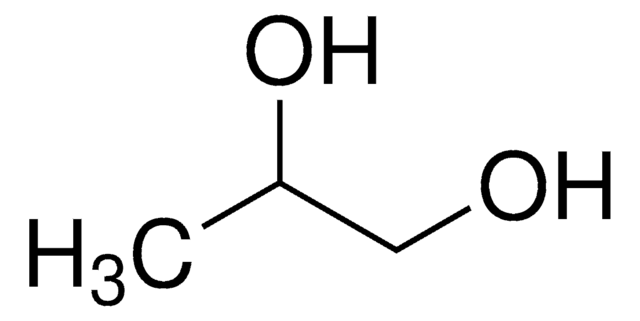1193265
USP
Diethylene glycol
United States Pharmacopeia (USP) Reference Standard
Synonym(s):
2,2′-Oxydiethanol, 2-Hydroxyethyl ether, Bis(2-hydroxyethyl) ether, Diglycol
About This Item
Recommended Products
API family
diethylene glycol
autoignition temp.
442 °F
expl. lim.
2-12.3 %
manufacturer/tradename
USP
density
1.118 g/mL at 25 °C (lit.)
application(s)
pharmaceutical (small molecule)
format
neat
SMILES string
OCCOCCO
InChI
1S/C4H10O3/c5-1-3-7-4-2-6/h5-6H,1-4H2
InChI key
MTHSVFCYNBDYFN-UHFFFAOYSA-N
Looking for similar products? Visit Product Comparison Guide
General description
Application
Also used to prepare standard, system suitability, and standard stock solution for impurity analysis and identification according to the given below monographs of United States Pharmacopeia (USP):
- Propylene Glycol
- Glycerin
- Polyethylene Glycol 3350
Analysis Note
Other Notes
related product
signalword
Warning
hcodes
Hazard Classifications
Acute Tox. 4 Oral
Storage Class
10 - Combustible liquids
wgk_germany
WGK 1
flash_point_f
280.4 °F - closed cup
flash_point_c
138 °C - closed cup
Certificates of Analysis (COA)
Search for Certificates of Analysis (COA) by entering the products Lot/Batch Number. Lot and Batch Numbers can be found on a product’s label following the words ‘Lot’ or ‘Batch’.
Already Own This Product?
Find documentation for the products that you have recently purchased in the Document Library.
Customers Also Viewed
Protocols
99%; Glycerol, ≥99.5%; Tetraethylene glycol, 99%
Our team of scientists has experience in all areas of research including Life Science, Material Science, Chemical Synthesis, Chromatography, Analytical and many others.
Contact Technical Service




